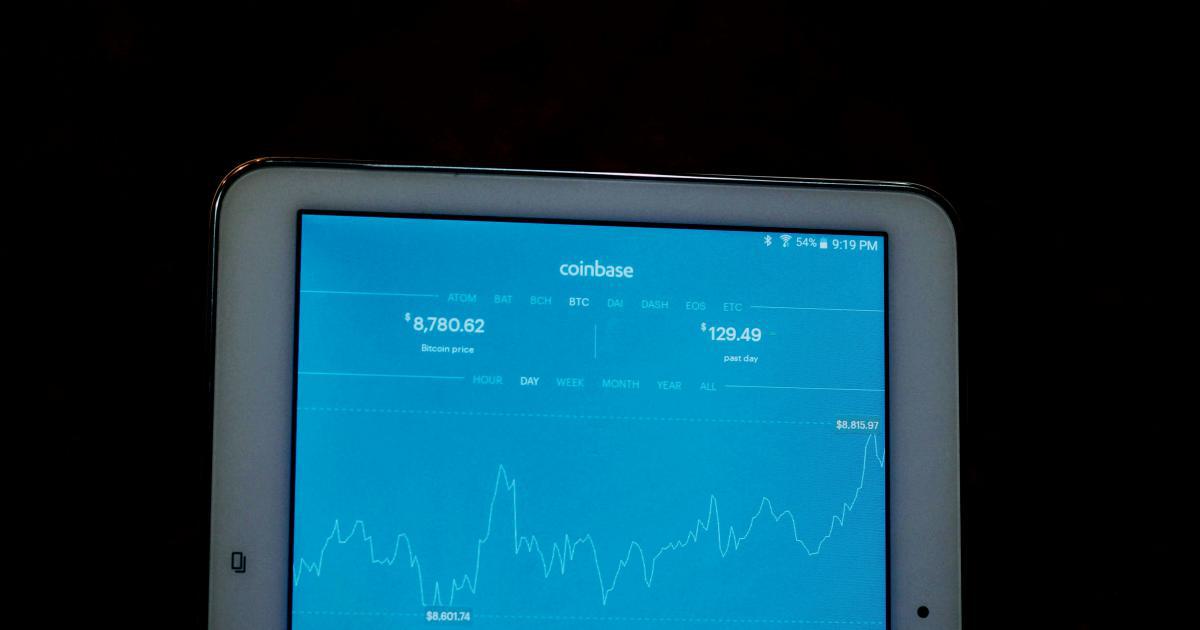4 Trend Following Indicators Revealed

Trend following indicators have become an essential part of modern technical analysis, especially among traders and investors who rely on identifying the underlying market momentum. By applying various methodologies to capture shifts in market sentiment, these trend following indicators help determine when to enter or exit a position. In this article, we will dive deep into four of the most commonly used trend following indicators, discussing their mechanisms, the reasoning behind their design, and how they can be implemented in real-world scenarios. Whether you are a beginner or an experienced trader, understanding these indicators can provide you with a strategic edge in making informed investment decisions.
In today’s fast-paced market, the ability to recognize and follow trends is not only beneficial—it is necessary. In the upcoming sections, we will explore comprehensive details about each indicator, backed by historical examples and actionable trading strategies to help you integrate these tools into your own analysis toolkit.
Introduction to Trend Following Indicators
Trend following indicators serve as a vital tool for many technical analysts. They are designed to signal the presence, strength, and potential reversal points of a market trend. By smoothing out the noise in price data, these indicators make it easier to understand the prevailing direction of an asset price. At the core of trend following strategies is the belief that “the trend is your friend,” and these tools help in identifying the underlying momentum.
Trend following indicators can be applied across multiple markets, including stocks, forex, commodities, and cryptocurrencies. While each market may behave differently, the basic premise of trend analysis remains similar: identifying a sustained movement in price in one dominant direction. In order to do this effectively, traders rely on indicators that filter out random fluctuations. A common outcome of this analytical process is the visualization of market trends, which empowers traders to make timely and informed decisions.
The key challenge for many traders is not just spotting trends but also confirming them, ensuring they are not mere short-term fluctuations. This necessity has led to the development of several specialized indicators, each with its unique approach and calculation method, to reaffirm market trends.
In the sections below, we will focus on four prominent indicators: Moving Averages, the Moving Average Convergence Divergence (MACD), the Average Directional Index (ADX), and the Parabolic SAR. Each section includes an explanation of how the indicator works, why it is effective, real-world examples, and tips for optimal usage.

1. Moving Averages: The Foundation of Trend Following
Moving averages are arguably the most fundamental trend following indicators. They work by calculating the average price of an asset over a predefined period. This technique helps in reducing the volatility seen in raw price data, thus revealing the underlying trend more clearly.
Understanding Simple Moving Averages (SMA) and Exponential Moving Averages (EMA)
There are two common types of moving averages: the Simple Moving Average (SMA) and the Exponential Moving Average (EMA).
- The SMA is calculated by summing the closing prices of an asset over a specific period and then dividing by the number of periods. This results in a smooth line that is easy to interpret.
- The EMA, in contrast, gives more weight to recent prices, which allows it to respond more quickly to changes in the market.
Both types have their benefits:
- The SMA is less sensitive to price fluctuations, making it better for identifying long-term trends.
- The EMA is more responsive to recent price changes and is preferred for short-term trading strategies.
The choice between SMA and EMA depends on the trader’s goals and market conditions. For instance, in a volatile market, an EMA might provide better entry and exit signals, while in a stable market, an SMA could offer a clearer picture of the overall trend.
How Moving Averages Work in Trend Following
When the current price of an asset is above the moving average, it is generally considered an upward trend. Conversely, when the price falls below the moving average, it signals a downtrend. However, merely observing the crossing of prices above or below the moving average isn’t foolproof. Traders often use multiple moving averages (e.g., a short-term EMA combined with a long-term SMA) to generate crossovers that serve as more reliable buy or sell signals.
Example: The Golden Cross and Death Cross
A well-known strategy involving moving averages is the Golden Cross and Death Cross method:
- A Golden Cross occurs when a short-term moving average (like the 50-day EMA) crosses above a long-term moving average (like the 200-day SMA), suggesting a potential upward breakout.
- Conversely, a Death Cross occurs when the short-term moving average falls below the long-term moving average, hinting at a bearish sentiment.
These strategies have been applied across various markets. For instance, many analysts credited the success of using moving average crossovers during certain bull markets in equities. However, it is essential to note that while these techniques can provide directional guidance, they can also lead to whipsaws—false signals generated in choppy markets.
Best Practices for Using Moving Averages
To maximize the benefits of moving averages, consider the following tips:
Combine with other indicators: Using moving averages in tandem with oscillators like RSI (Relative Strength Index) or momentum indicators can help filter out false signals.
Adjust your time frames: Different assets react differently depending on market conditions. Experimenting with various time frames can help tailor the indicator to your specific trading style.
Backtest strategies: Before applying moving average strategies in live trading, backtesting on historical data can uncover potential pitfalls and adjustments needed.
Real-World Application: A Case Study
Consider the case of a mid-cap stock that was notably volatile over a six-month period. By employing both a 50-day EMA and a 200-day SMA, traders were able to identify a clear Golden Cross event. This event marked the stock as potentially entering a long-term uptrend. With additional confirmation from volume analysis and other technical signals, the traders entered the position and subsequently achieved a substantial profit as the trend continued.
Moving averages are the bread and butter of technical analysis, giving both novice and expert traders a clear way to gauge market trends. Their simplicity and adaptability make them a fundamental tool that should not be overlooked.

2. MACD: Convergence and Divergence in Trends
The Moving Average Convergence Divergence (MACD) is another highly effective trend following indicator. It was created to capture the momentum and trend direction by comparing different moving averages. Unlike simple moving averages that merely smoothen price data, MACD specifically looks at the convergence and divergence of two moving averages to signal potential changes in momentum.
How the MACD Works
The MACD consists of three components:
The MACD line: This is calculated by subtracting the longer-term moving average (typically the 26-day EMA) from the shorter-term moving average (typically the 12-day EMA).
The signal line: Usually a 9-day EMA of the MACD line, it acts as the trigger for buy and sell signals.
The histogram: Representing the difference between the MACD line and the signal line, it provides a visual representation of the momentum shift.
Intuitively, when the MACD line crosses above the signal line, it signals that upward momentum is picking up, potentially marking a buying opportunity. Conversely, when the MACD line crosses below the signal line, it may indicate that the asset is losing momentum, and a selling signal could be generated.
Interpreting the MACD Histograms
The histogram plays a critical role in justifying the signals. As the divergence between the MACD line and its signal line grows, the histogram expands, giving traders an early hint of changing momentum before the lines cross. An expanding histogram indicates that the current trend is strengthening; a contracting histogram can hint that the trend is waning or that a reversal may be imminent.
Practical Example: Trading with MACD
An effective strategy using MACD could involve waiting for the MACD histogram to begin contracting after a significant move. For example, suppose a stock witnessed a rapid price increase with an expanding MACD histogram. If the histogram starts to decline or contract, this could be a cue that the bullish momentum is slowing down. Traders might then prepare to enter a short position or consolidate their gains. Conversely, a similar scenario applies in downtrends.
Limitations of the MACD
While the MACD is robust and widely used, it does have limitations. Like any indicator, it is not infallible and may produce false signals, especially during periods of low volatility or sideways markets. Therefore, it is advisable to confirm MACD signals with other technical analysis tools such as support/resistance levels or additional momentum indicators.
Best Practices for Using MACD
To improve the reliability of MACD signals, traders should:
Use MACD in combination with other trend following indicators. For instance, if both MACD and moving averages point to a bullish trend, confidence in the signal increases.
Focus on histogram analysis in addition to line crossovers. The histogram can provide early warnings by indicating acceleration or deceleration in momentum.
Set clear entry and exit rules to avoid emotional decision-making, particularly in volatile or whipsaw markets.
Regularly calibrate the parameters depending on the asset type and trading timeframe.
Real-World Application: MACD in Action
A practical example of MACD in action can be found in the forex market. Consider a scenario where a currency pair was in a downtrend. The MACD line was steadily below the signal line with a growing negative histogram, clearly indicating weakening bullish sentiment. As soon as the MACD line started to reverse and cross over the signal line, it provided a shift in momentum indication. Traders who identified the signal early and responded quickly managed to capture a profitable reversal trade, thereby minimizing losses and maximizing gains.
The adaptability and multi-faceted approach of MACD make it an indispensable tool for market participants. By understanding its components and interpreting its signals carefully, traders can add another layer of confirmation to their trend following strategies.

3. ADX: Measuring Trend Strength
The Average Directional Index (ADX) is specifically designed to measure the strength of a trend. Unlike other indicators that signal the direction of market movement, ADX quantifies how strong that movement is. This information assists traders in determining whether a trend is robust enough to justify a position or if the market is likely to reverse or consolidate.
The Mechanics Behind ADX
Developed by J. Welles Wilder, the ADX is calculated as part of the Directional Movement System, which also includes the Positive Directional Indicator (+DI) and the Negative Directional Indicator (-DI). The ADX line typically ranges from 0 to 100:
- A value below 20 generally indicates a weak trend, often suggesting a sideways or choppy market.
- A value above 20 indicates an emerging or established trend, and higher values (above 40 or 50) represent very strong trends.
The ADX does not provide directional bias; instead, it measures only the intensity of the trend. For directional insight, traders must also consider the +DI and -DI lines, which help infer whether the trend is bullish or bearish.
Using ADX to Confirm Trend Strength
Traders use ADX primarily to determine whether the market is suitable for trend following strategies:
- In a strong trend (high ADX), trend following indicators are more likely to yield reliable signals.
- In a weak trend (low ADX), traders might prefer to adopt a range-bound or mean reversion strategy.
Example: ADX in Equity Trading
Imagine an equity market scenario where the ADX value climbs steadily above 30. This rising ADX indicates that the trend is gaining strength, thereby validating the signals from moving averages and MACD. On the contrary, if the ADX falls below 20, the risk of false signals increases, and traders may decide to either reduce their exposure or wait for a more reliable trend formation.
Integrating ADX with Other Trend Following Indicators
To maximize effectiveness, ADX is often used alongside the other indicators:
Moving Averages: ADX can confirm whether the trend indicated by moving average crossovers is strong enough to sustain the trade.
MACD: An increasing ADX can corroborate MACD’s signals, ensuring that momentum shifts are backed by a strong trend.
Parabolic SAR: Combining ADX with Parabolic SAR can help in timing exits, particularly when ADX signals a weakening trend.
A multi-indicator approach minimizes the risk of acting on false signals and improves the confidence level of the trading strategy.
Practical Steps to Implement ADX
To integrate ADX into your trading plan, consider the following actionable steps:
Establish the primary trend using moving averages or price analysis.
Apply the ADX indicator to measure the strength of the trend. Look for values consistently above 20 for trend confirmation.
Combine ADX readings with other signals such as MACD crossovers. For example, if the ADX is rising while the MACD line crosses above its signal line, it offers a dual confirmation of an upward trend.
Use ADX in conjunction with stop-loss settings to better manage risk. In an environment where ADX is declining, consider tightening stop losses to protect profits as the trend loses momentum.
Case Study: ADX in Commodity Markets
In the commodities market, where price swings can be dramatic, the ADX has proven particularly useful. A trader observing a commodity like crude oil noted that during periods when the ADX surged above 40, the price trend tended to be durable and followed through. By integrating ADX signals with moving average crossovers, the trader was able to capture substantial gains during periods of sustained price movements, while reducing exposure during less defined market conditions.
Through its emphasis on trend strength rather than just direction, the ADX enables traders to dynamically adjust their positions based on market conditions, ensuring better risk management and improved performance.
4. Parabolic SAR: Timing Entries and Exits
The Parabolic Stop and Reverse (SAR) indicator, developed by J. Welles Wilder, is a unique tool that primarily aims to determine optimal exit and entry points in a trending market. It appears as a series of dots placed either above or below the price bars on a chart. When the dots are below the price, the indicator suggests a bullish trend; when above, it signals a bearish trend. This method provides traders with clear, actionable signals.
How Parabolic SAR Works
The mechanics of the Parabolic SAR are based on a time/price reversal system. The indicator calculates a series of potential stop loss levels that move closer to the price as the trade progresses. When the price hits the stop loss level, the system reverses, flipping the dots to the opposite side. This reversal signals that the market might be changing its trend direction.
The calculation involves an acceleration factor that increases each time the trend continues. This acceleration factor pushes the dots closer to the price, thereby reducing the distance to the stop loss and protecting accumulated profits. However, once a reversal occurs, the acceleration factor is reset, allowing the indicator to adapt to new market conditions.
Practical Uses and Limitations
Parabolic SAR is particularly useful for:
- Timing entries: Traders often enter a position when the dots flip from above to below the price, signaling the start of a bullish trend.
- Exiting trades: The change in the dot’s location can be used as a signal to exit losing trades before the loss expands further.
- Risk management: By essentially acting as a trailing stop loss, the Parabolic SAR helps secure profits.
However, the Parabolic SAR works best in trending markets. In sideways or choppy markets, the frequent reversals can lead to whipsaw losses. Consequently, it is advisable to combine the Parabolic SAR with other trend following indicators, such as moving averages or ADX, to avoid false signals during periods of low volatility.
Strategies for Implementing Parabolic SAR
To effectively deploy Parabolic SAR in your technical analysis toolkit, follow these detailed steps:
Identify a clear trend using preliminary analysis tools such as moving averages.
Apply the Parabolic SAR and monitor the dots relative to the price. A reversal, indicated by the dot switching sides, should prompt reconsideration of your position.
Combine the signals with volume analysis or indicators like ADX to confirm trend strength. For instance, if the Parabolic SAR signals an exit while the ADX indicates a robust trend, a trader might choose to hold a smaller position rather than fully exiting.
Set dynamic stop-loss orders based on the Parabolic SAR values to protect gains. As the dots move closer to the price, adjust your trailing stop accordingly to minimize risk.
Analyzing a Real-World Example
Consider a scenario in the technology sector where a stock is in a strong uptrend. The Parabolic SAR initially places dots below the price, confirming a bullish market. As the price continues to rise, the dots move upward, trailing closer to the current price. Suddenly, the dots flip above the price, suggesting that the bullish trend may be waning. An experienced trader, having combined this with signals from moving averages and MACD, exits the position just as the reversal begins, thereby locking in profits and avoiding a significant downturn.
The strength of the Parabolic SAR lies in its simplicity and its clear visual cues. However, best results are achieved by using it as part of a broader analytical framework. This multi-indicator approach minimizes the risk inherent in relying solely on one method and ensures that trading decisions are backed by diverse analytical signals.

Putting It All Together: An Integrated Trend Following Strategy
After examining Moving Averages, MACD, ADX, and Parabolic SAR individually, it is essential to consider how they can work together as a cohesive trading strategy. Each of these trend following indicators has its unique strengths, and when combined, they offer a comprehensive view of market conditions.
Developing a Comprehensive Trading Plan
A robust trading strategy should involve:
- Identifying the prevailing trend using Moving Averages.
- Confirming the trend's momentum with MACD.
- Measuring the strength of the trend with ADX.
- Timing entries and exits with the Parabolic SAR.
When the signals from these indicators align, trading decisions are more likely to be successful. For example, an ideal situation might involve the following sequence:
A stock's price crosses above its long-term moving average, indicating an emerging uptrend.
The MACD line subsequently crosses above its signal line, reinforcing the bullish signal.
The ADX value rises above 25, confirming that the trend is gaining strength.
The Parabolic SAR dots remain below the price, suggesting that it is safe to maintain a long position.
Actionable Solutions and Expert Tips
To implement this integrated strategy effectively:
- Start by backtesting: Before committing real capital, backtest your strategy on historical data. This practice will help you refine the parameters of each indicator based on the asset and timeframe you are trading.
- Diversify your analysis: No single indicator is perfect. Combining signals reduces the chance of false positives and negatives.
- Maintain discipline: Set clear rules for entering and exiting trades. Emotional decision-making can lead to losses, so adhering to a pre-determined strategy is crucial.
- Continuously review and adapt: Market conditions change over time. Regularly review the performance of your strategy and adjust the indicator settings if needed.
Benefits and Long-Term Impact
An integrated approach using trend following indicators not only improves the chances of capturing strong trends but also enhances risk management. By relying on multiple confirmations, traders can enter positions with higher confidence and protect their profits during volatile market conditions. This holistic approach has been embraced by many professional traders and is particularly useful in markets characterized by rapid shifts in sentiment.
In the long run, successful application of these indicators can result in consistent performance and a methodology that adapts to different market cycles. As technology advances and data analysis becomes more sophisticated, the insights provided by these time-tested trend following indicators remain relevant, offering a competitive edge in trading.
Concluding Thoughts
The four trend following indicators discussed in this article—Moving Averages, MACD, ADX, and Parabolic SAR—are powerful tools for navigating the complex world of technical analysis. Each indicator offers a unique perspective on market trends, and their combined use enables traders to make more informed decisions. Whether you are identifying emerging trends, confirming momentum shifts, assessing trend strength, or timing your entries and exits, these indicators provide actionable solutions supported by real-world examples.
Incorporating these tools into your trading strategy requires both discipline and continuous learning. It is advisable to practice on demo accounts, engage with trading communities, and continuously update your analysis with market developments. Remember, no indicator is foolproof; the key lies in developing a robust system that leverages multiple signals to formulate a comprehensive view of the market.
By embracing an integrated strategy, you open the door to refined analysis and enhanced risk management. This methodical approach will not only boost your trading confidence but also pave the way for long-term success in the dynamic world of financial markets.
As you explore these trend following indicators, remember to adapt your strategy to current market conditions, learn from each experience, and enjoy the journey of continuous improvement in your trading endeavors.
Unmatched Trading Power with Binance
Are you ready to take your trading game to new heights? Binance offers a cutting-edge platform for seamless cryptocurrency transactions.
With lightning-fast execution, top-tier security, and a vast selection of coins, you'll have all the tools you need to maximize your profits. Join now and experience the future of trading.
Shion Tanaka
31 posts written





